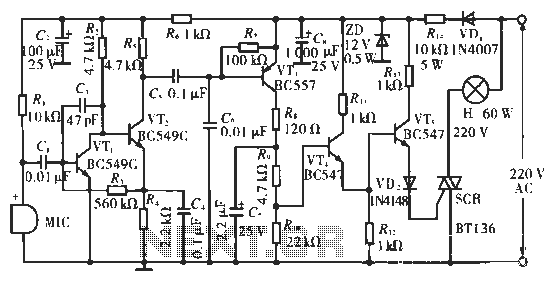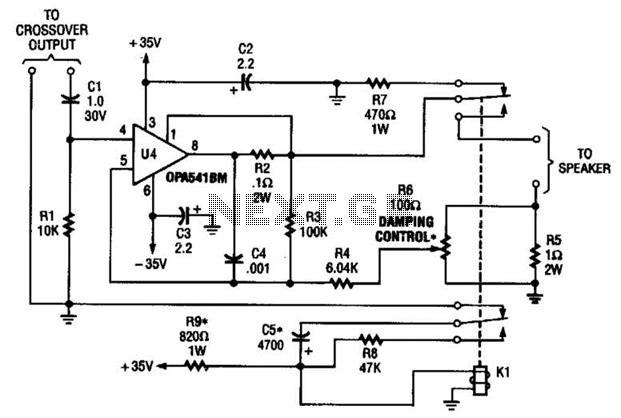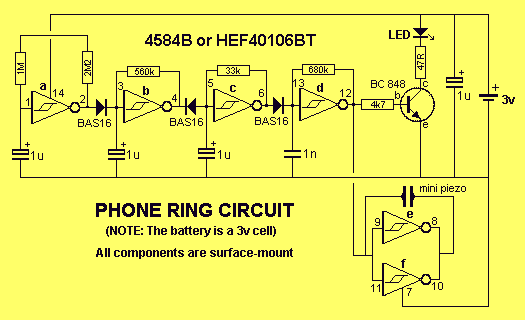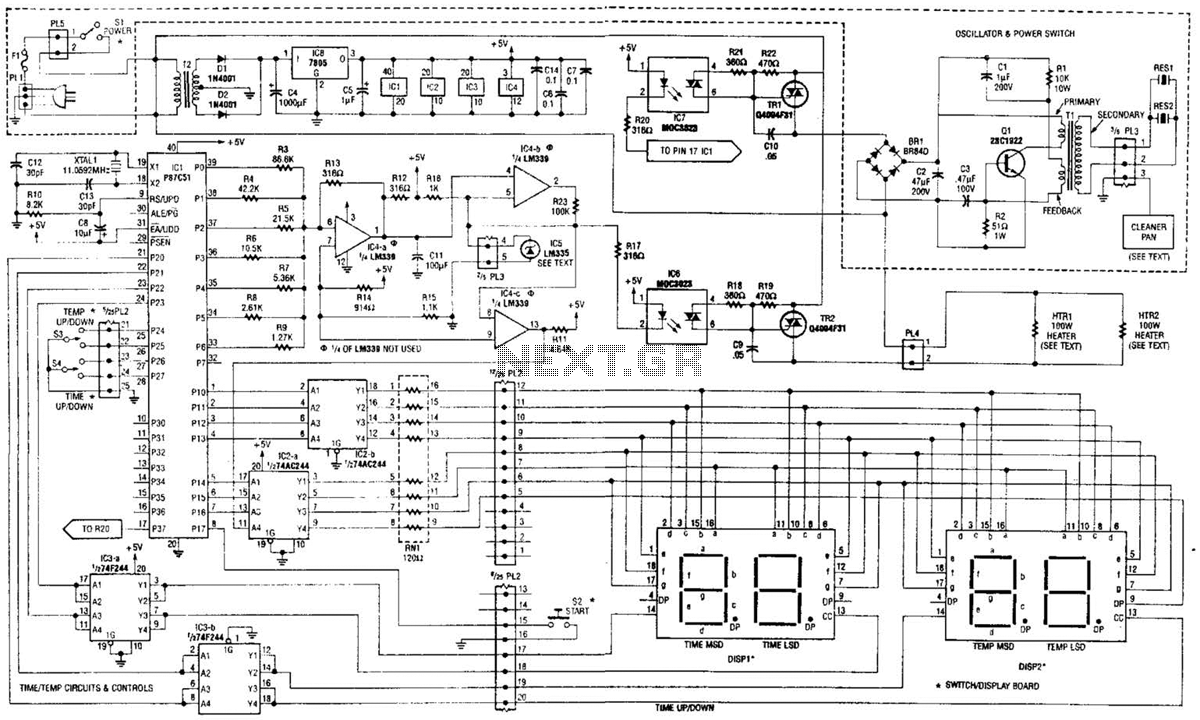
Ear Protector Circuit
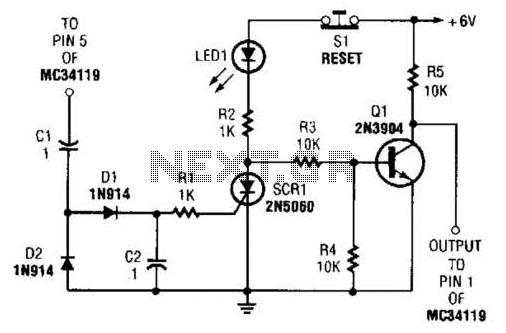
The ear protector is a peak audio detector and shutdown circuit that disables the amplifier through its chip-disable input when the output volume of the amplifier reaches a predetermined level. Although designed for the MC34119 amplifier, the circuit should be compatible with similar integrated circuit devices or applications.
The ear protector circuit functions by continuously monitoring the output audio signal level from the amplifier. It employs a peak detector to assess whether the output volume exceeds a specified threshold. When the detected output level surpasses this threshold, the circuit triggers a shutdown mechanism that activates the chip-disable input of the amplifier. This effectively mutes or disables the amplifier, thereby protecting the connected audio output devices and preventing potential damage due to excessive volume levels.
The components typically involved in this circuit include resistors, capacitors, a diode for rectification, and the peak detection circuitry, which may consist of operational amplifiers or comparators. The design must ensure that the threshold level is adjustable to cater to various applications and user preferences.
In implementing this circuit, careful consideration should be given to the selection of the components to ensure compatibility with the specific amplifier IC being used. The peak detector's response time should also be optimized to ensure it reacts quickly enough to transients in the audio signal without causing unnecessary interruptions in audio playback.
For applications beyond the MC34119 amplifier, the circuit can be adapted by modifying the input and output connections as required while maintaining the core functionality of peak detection and shutdown. This versatility makes the ear protector circuit a valuable addition to any audio system where volume control and protection against clipping or distortion are critical. The ear protector is actually a peak audio-detector/shutdown circuit that disables the amplifier through its chip-disable input when the output volume of an amplifier reaches the set level. The circuit, although intended for the MC34119 amplifier, should work with similar IC devices or applications.
The ear protector circuit functions by continuously monitoring the output audio signal level from the amplifier. It employs a peak detector to assess whether the output volume exceeds a specified threshold. When the detected output level surpasses this threshold, the circuit triggers a shutdown mechanism that activates the chip-disable input of the amplifier. This effectively mutes or disables the amplifier, thereby protecting the connected audio output devices and preventing potential damage due to excessive volume levels.
The components typically involved in this circuit include resistors, capacitors, a diode for rectification, and the peak detection circuitry, which may consist of operational amplifiers or comparators. The design must ensure that the threshold level is adjustable to cater to various applications and user preferences.
In implementing this circuit, careful consideration should be given to the selection of the components to ensure compatibility with the specific amplifier IC being used. The peak detector's response time should also be optimized to ensure it reacts quickly enough to transients in the audio signal without causing unnecessary interruptions in audio playback.
For applications beyond the MC34119 amplifier, the circuit can be adapted by modifying the input and output connections as required while maintaining the core functionality of peak detection and shutdown. This versatility makes the ear protector circuit a valuable addition to any audio system where volume control and protection against clipping or distortion are critical. The ear protector is actually a peak audio-detector/shutdown circuit that disables the amplifier through its chip-disable input when the output volume of an amplifier reaches the set level. The circuit, although intended for the MC34119 amplifier, should work with similar IC devices or applications.

